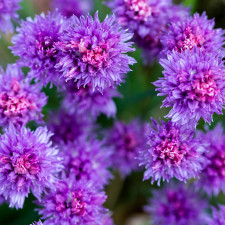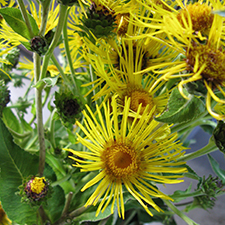Growing Herbs – The Basics
I compiled this summary from many sources over time, and have edited it for you. Growing herbs is easy and fun and magical! You may find you have some volunteer wild herbs growing already in your yard. See my post on Eat Your Weeds. Pay attention to what is growing near you – plants come to help.
Growing From Seed:
Popular herbs that are easy to grow from seed include basil, borage, calendula, chervil, coriander, dill, lemon balm, parsley and sage.
Germination varies from 12 to 30 days; check catalog or seed packet for specific times. Rosemary, with a long germination time, can be planted directly in the ground in the fall. Lemon balm, rosemary, sage, winter savory will grow from cuttings. Chives, garlic, mints, horseradish are increased by division of the clumps as new spring growth is developing.
Wild seeds from everywhere: http://www.seedman.com/medicine.htm
If you want to start new herbs from plants that you already have growing in your garden, there are several ways to do it, all of them variations of vegetative propagation.
Root division:
For many hardy perennial herbs, root division is the simplest means of propagation. Using a garden fork, dig up the plant’s root system and either pull the roots apart by hand (as with chives), or cut the root mass into several pieces and replant them elsewhere in the garden.
The best time to divide plants is in the fall, when they are winding down for the year. If divided and replanted at this time, new plants will establish themselves and get off to a good start the following spring. Placing transplants on a small mound of soil or compost in the bottom of the planting hole helps to prevent settling. Firm down the soil around the plants and water them well after planting to eliminate any large air pockets around the roots. Laying a thick organic mulch around plants in the late fall will help insure against crown heaving, which may otherwise occur as a result of freeze/thaw cycles over the winter.
Herbs that respond well to root division include bee balm, chives, garlic chives, horehound, lovage, marjoram, oregano, pennyroyal, sorrel, tansy, thyme, and sweet woodruff.
Cuttings:
Stem cuttings of various herbs (hyssop, lavender, mints, oregano, sage, thyme) should be taken during the spring or summer, when plants are healthy and growing vigorously. Rosemary and tarragon tend to root better in the fall, so use them for cuttings at that time and grow them indoors over the winter.
- Select stem segments that are tender (not woody) and about three to six inches long, with at least five leaves along the stem. Make an angled cut, just above an outward-facing leaf node.
- Remove the lower leaves on the stem, dip the cut end in rooting hormone powder, and plant it deeply in a pot containing a soilless seed-starting medium mixed with moistened vermiculite or perlite.
- Cover the cuttings loosely with a plastic bag to create humid conditions and place them in a cool (70 degrees F) location away from direct sunlight.
- Monitor the plants and water if needed, or remove the plastic bag if there seems to be too much moisture. After a few weeks, start checking for new leaf growth, which indicates that the plants are rooting well. Repot the plants into larger containers filled with regular potting soil and gradually expose the plants to full light.
Layering:
Layering involves burying a trailing stem of an herb plant, encouraging it to form roots, and ultimately creating a new plant. It works well with perennial herbs such as marjoram, rosemary, sage, and winter savory. The best time to do this kind of propagation is in spring (on last year’s growth) or in summer (on this year’s growth).
-
Select a stem that is long and trailing and that you can bend down easily to touch the ground.
-
Make a slanted cut halfway through the stem (or, with slender stems, scrape the outer surface). Place the cut part of the stem in a shallow depression just below the soil surface, holding down the stem on either side with lengths of metal wire (unbent paper clips are good for this). Cover the cut part of the stem with a little soil, and water well.
-
After six to eight weeks, brush away the soil and check to see whether the stem has begun to form a new root system. If it has, cut the stem that connects the new plant to the mother plant and transplant the new plant elsewhere in the garden.


